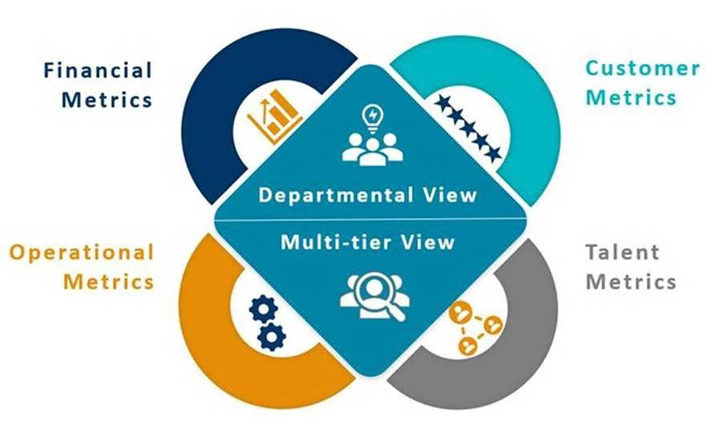For many firms the annual planning process is well underway. Leadership sets a vision for the business strategy, which is often a three-year view of growth and transformation. Annual business goals are confirmed and communicated throughout the organization. So, you’re ready to set your own objectives and start working towards them, right? Not quite. You still need a plan. One of my favorite business advisors once said to me, if your plans require you to travel from Chicago to Denver, you’d better have a roadmap of how to get there, so you don’t end up in Dallas by mistake! Similarly, in your business, it’s difficult to get from Point A (strategy and goals) to Point B (successful results) without a map of how to get there. This road map in the business world is a scorecard. It is the golden thread that connects business goals to measures of success.
Scorecards are important because they translate strategies and goals into tactics and actions – from the “what” to the “how”. A scorecard enables a firm to track progress within a defined framework. It specifies the outcomes that align all team members with the same vision of success.
Constructing a Scorecard It’s important to take the time to construct a scorecard properly. If you don’t, you won’t end up with a fabric that successfully weaves all the threads together. Some believe that the more metrics in a scorecard the better, but that’s not the case. There are a limited number of key levers that influence business results. The more focused a scorecard is, the clearer the roadmap. The best scorecards provide simplicity and priority – both across the organization and within the tiers of an organization.
A cross-functional view enables you to specify the interdependencies among departments. For example, if your goal is to increase sales by 10%, it will take more than just the Sales department to ensure success. The scorecard can specify requirements for new product roll out from Product Development, for lead generation from Marketing, for pricing support from Finance, and for customer satisfaction from Service Delivery. Through a scorecard, you can weave those individual threads into a fabric that achieves the firm’s goal – the golden thread.
A multi-tier view enables each layer of the organization to understand their influence in achieving the overall, big-picture outcome. Using the same example of a goal to increase sales by 10%, a sales rep might have a metric for new sales contracts or customer up-sells per month, the manager will have a metric for team achievement, the district manager for regional or product performance, and the VP for overall sales achievement. Without a coordinated view up and down the organization, there is no golden thread. Each tier might establish its own measures of performance, declare success for themselves, and yet the department’s objectives may not be met.
The scorecard should include four dimensions: finance, operations, customer, and resources. Regardless of business goal, including all four components provides a holistic view of requirements for success – again, the golden thread.
- The Finance dimension defines financial goals focused on specific revenue, expense, or profit measures.
- The Operations dimension defines the operational performance needed to support the financial goal. Examples include increased volumes of sales leads, improved win ratios of contracts offered, reduced cycle time for sales fulfillment, optimized unit costs for service delivery.
- The Customer could specify metrics for the number of new customer logos required, or growth expectations from the existing client base, as well as client satisfaction metrics to ensure the likelihood of recurring business.
- The Talent dimension defines the optimal organization to deliver on business goals. Measures might include talent development requirements for evolving skill needs, talent acquisition requirements to meet the demands of a growing business, and employee turnover metrics to assess talent retention risks. This dimension is equally important as the others for gauging business success, but is one companies often disregard.
It is much easier to drive business success with clear metrics. A scorecard allows for that. It defines the “golden thread” – measuring each department’s contribution, up and down the organization, and across all dimensions. With a properly constructed scorecard in place, everyone in the organization is headed in the same direction. This coordinated roadmap provides tangible checkpoints to gauge success along the journey and a proven methodology to ensure achievement of business goals.
Want to find out what your scorecard should look like? Contact us to learn more.





